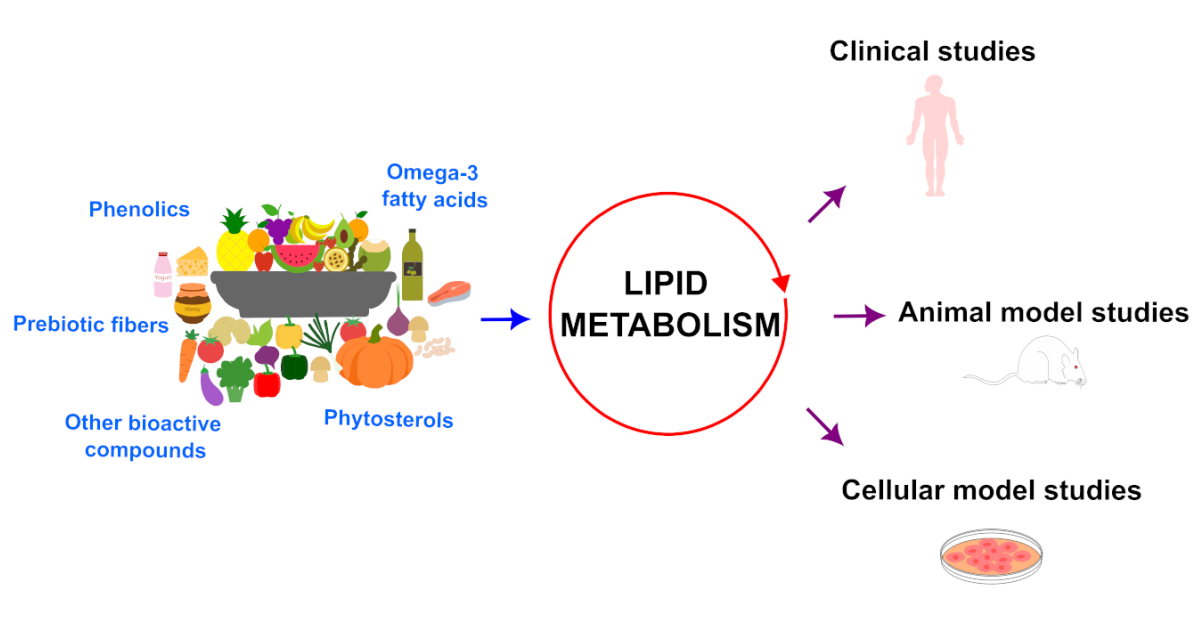- 5.1Impact Factor
- 8.7CiteScore
- 15 daysTime to First Decision
Bioactive Ingredients in Functional Foods—Their Role in Lipid Metabolism
This special issue belongs to the section “Food Nutrition“.
Special Issue Information
Dear Colleagues,
Lipid metabolism, a complex process crucial for maintaining physiological balance, has garnered significant attention due to its implications for health and disease. In parallel, functional foods, rich in bioactive compounds, have emerged as promising tools for influencing lipid metabolism and addressing associated disorders such as dyslipidemia, obesity, and cardiovascular diseases. However, comprehensive understanding is still lacking regarding the mechanisms through which these compounds exert their effects and their impact on the absorption, synthesis, transport, excretion, and oxidation of lipids in the body. Therefore, this Special Issue aims to explore the potential of functional foods, abundant in bioactives, to prevent and treat disorders related to lipid metabolism, encompassing both preventive and therapeutic approaches.
We welcome original articles or reviews addressing, but not limited to, the following topics:
- The influence of bioactive compounds (e.g., phenolics, omega-3 fatty acids, prebiotic fibers, phytosterols) on lipid metabolism pathways;
- The identification and characterization of bioactive compounds with properties for modulating lipids in cell models, pre-clinical, and clinical studies;
- The molecular mechanisms of action of bioactive compounds and assessment of their bioavailability and effectiveness;
- Investigation of synergistic interactions among bioactive ingredients and assessment of their impact on lipid metabolism in cell models, pre-clinical, and clinical studies.
Prof. Dr. Jailane De Souza Aquino
Guest Editor
Dr. Kamila Sabino Batista
Guest Editor Assistant
Manuscript Submission Information
Manuscripts should be submitted online at www.mdpi.com by registering and logging in to this website. Once you are registered, click here to go to the submission form. Manuscripts can be submitted until the deadline. All submissions that pass pre-check are peer-reviewed. Accepted papers will be published continuously in the journal (as soon as accepted) and will be listed together on the special issue website. Research articles, review articles as well as short communications are invited. For planned papers, a title and short abstract (about 250 words) can be sent to the Editorial Office for assessment.
Submitted manuscripts should not have been published previously, nor be under consideration for publication elsewhere (except conference proceedings papers). All manuscripts are thoroughly refereed through a single-blind peer-review process. A guide for authors and other relevant information for submission of manuscripts is available on the Instructions for Authors page. Foods is an international peer-reviewed open access semimonthly journal published by MDPI.
Please visit the Instructions for Authors page before submitting a manuscript. The Article Processing Charge (APC) for publication in this open access journal is 2900 CHF (Swiss Francs). Submitted papers should be well formatted and use good English. Authors may use MDPI's English editing service prior to publication or during author revisions.
Keywords
- antioxidants
- lipid profile management
- lipid metabolism enzymes
- cholesterol and fatty acid metabolism
- dyslipidemia and cardiovascular diseases
- plant-based foods
- obesity
- animal models
- clinical studies
- cell lines

Benefits of Publishing in a Special Issue
- Ease of navigation: Grouping papers by topic helps scholars navigate broad scope journals more efficiently.
- Greater discoverability: Special Issues support the reach and impact of scientific research. Articles in Special Issues are more discoverable and cited more frequently.
- Expansion of research network: Special Issues facilitate connections among authors, fostering scientific collaborations.
- External promotion: Articles in Special Issues are often promoted through the journal's social media, increasing their visibility.
- e-Book format: Special Issues with more than 10 articles can be published as dedicated e-books, ensuring wide and rapid dissemination.

